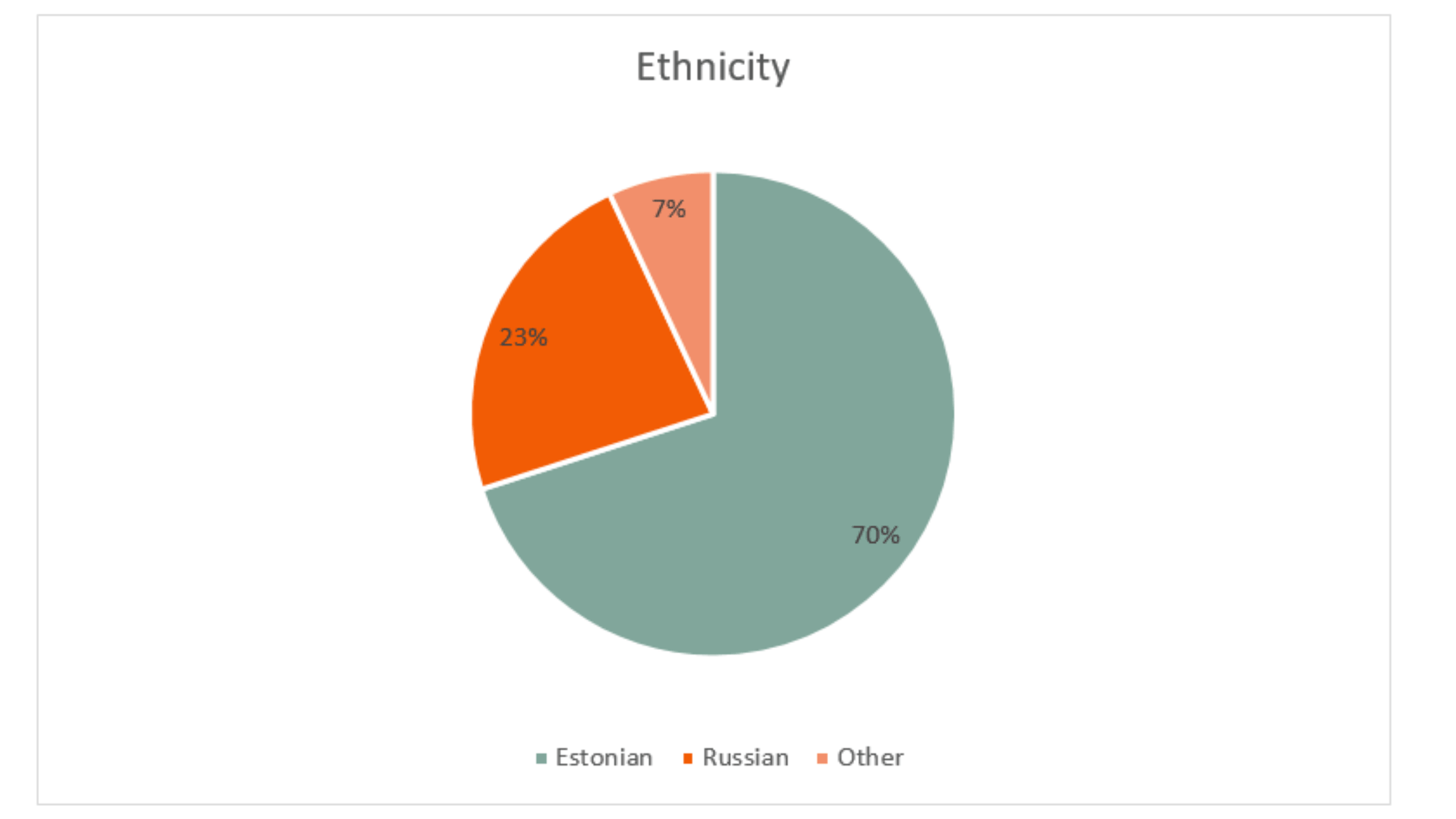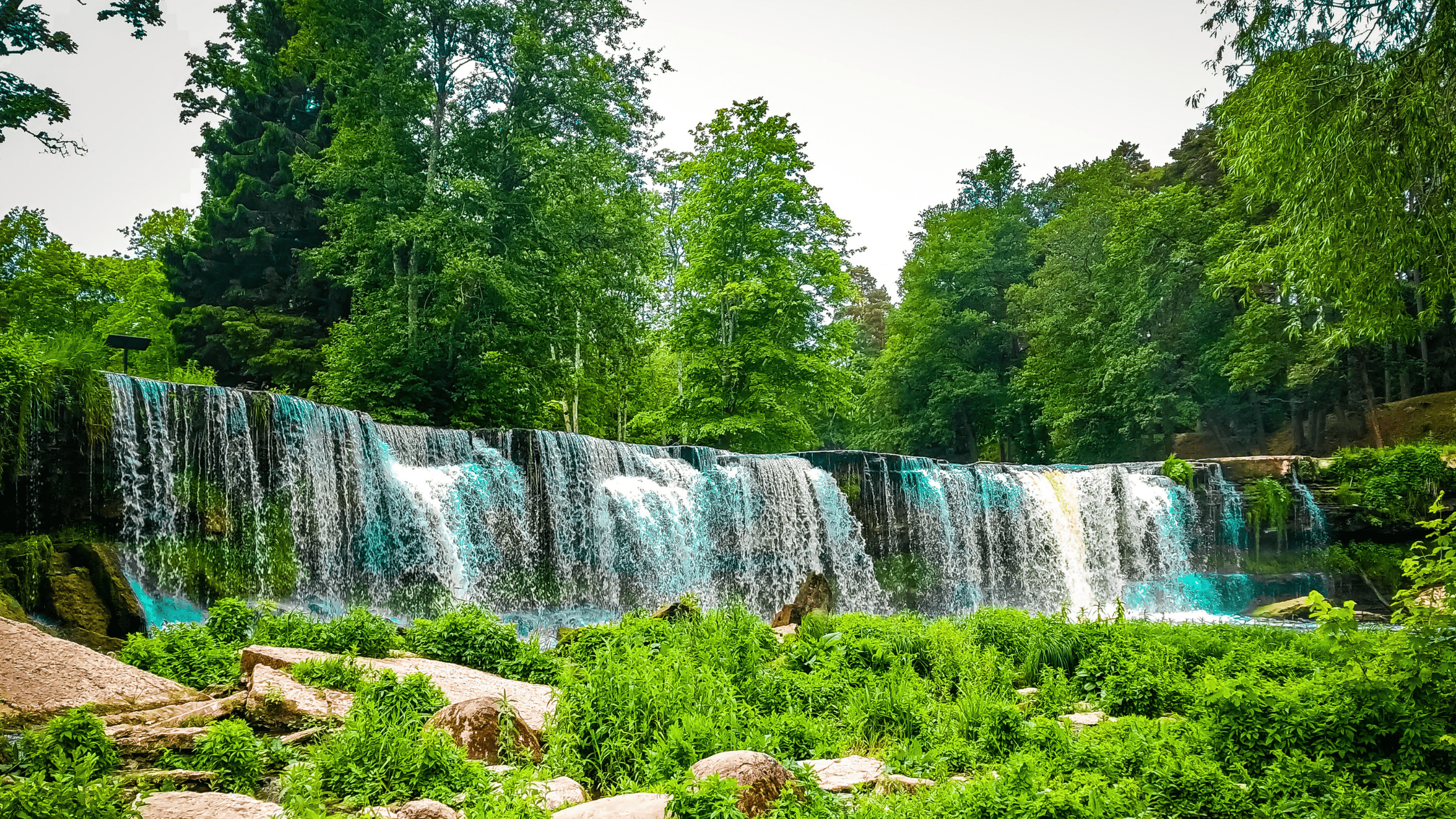General Information
| POPULATION | 1.325 million |
| LANGUAGE | Estonian |
| CAPITAL | Tallinn |
| CURRENCY | Euro (€) |
Fun Facts
- Worlds largest collection of folksongs
- First country to do voting electronically
- Free public transport for locals
- Wife carrying is a sport
- A lot of overseas fashion models
- Largest lake is Peipus
Estonia
A land of forests, low hills and lakes, Estonia is the smallest of the Baltic countries. Once a farming nation, the soviets transformed Estonia into an urban, industrialized region. Today industries include timber, shipbuilding and food processing. Since becoming independent from the USSR in 1991, tensions have spring up between the native Estonians and the third of the population that is Russian. Estonia is bordered by Russia to the east and Latvia to the south and the Baltic Sea to the north and west and is a northern European country.
Ethnicity
There are 1.3 million people living in Estonia
- 70% Estonian
- 23% Russian
- 7% Other

Economy
Poverty is a big issue in Estonia, 1 in 5 people are living under the national poverty line mostly because of the lack of good education and government funding. There is income inequality between men and women which is also due to lack of education. Interestingly in Estonia there are a lot of single parents due to the fact that religion isn’t really as important so there isn’t a need to marry. 86% of people do not declare themselves religious. There is free healthcare for all people living in Estonia. It is a developed country with citizens earning high income. Estonia is a safe country to visit although you can never rule out the fact that there are a few criminals mostly pick pocketers and mugging. Statistics have shown that Estonia’s economy should grown by 2.6 percent in 2021.
Food
Like the other Baltic countries Estonians cook substantial meals. Most dishes have a specific season labelled to them for example Verivostid (blood sausage) is associated with Winter and the vastlakukkel cream buns in February. Despite this, the national dish most Estonians would have to agree with is the Baltic Dwarf Herring which is served with potatoes, sour cream and crisp bread. Marinated eel, shrimp and any type of cray fish are considered a delicacy. Much like its neighbors Estonians love a good glass of vodka or Vanna Tallinn.
Here is a list of some more good Estonian dishes to try:
– Smoked fish
– Mulgipuder (potato and groats porridge)
– Rosolje (Pickled herring, beetroot and potato)
– Pirukas ( Dough pockets with meat or vegetables)
– Kohuke ( Snack made with Curd)
Places
The capital city of Estonia is Tallinn but some other notable cities are Tartu and Parnu. There are many castles in Estonia such as Rakvere where you can see a lot of ruins from some of the wars. In the winter there is a really long ice road that cars are allowed to drive on but you need to be very cautious this is from mainland Estonia to Hiiumaa the second largest island in Estonia. Estonia also owns a large island called Saaremaa where there is a high concentration of boulders and craters. There is also evidence/history from the Swedish and Danish invasion dating back 8,000 years. Some of the boulders in Saaremaa have shail oil which is quite a commodity in Estonia. 60% of Estonia is forested there is also a lot of wetland and bogs. Estonia owns 2,222 islands some of which are privately owned and played roles in defining the history of Estonia. Roughly 1/3rd of the population lives in Tallinn, many of Estonia’s regular flow of tourists wander around the narrow, medieval streets of the city’s old quarter.
Some other places to visit are:
– Haapsalua a small town on the east side of Estonia that has a lot of things to do in it
– Lake Peipus is full of nature and is near the Russian border.
– Kadriorg art museum in Tallinn
History
Estonia has a tragic modern history but it started when…
Estonia was first mentioned by Tacitus a Roman historian back in the first century AD. Long after the Vikings invaded. In 1170 the Danish invaded to attempt to Christianize Estonia but that didn’t work. In 1629 the Swedish invaded. Germany came into Estonia in the second world war but the USSR got to Estonia first. Estonia started the singing revolution and left the USSR which saved all the Baltic countries from the USSR. The singing revolution was where people formed a long line stretching across the country holding hands whilst singing patriotic folksongs. In 2003 they joined the EU (European Union) and in 2004 they became a part of NATO.




Language Basics
| English | Estonian |
| Hello | Tere |
| Goodbye | Hüvasti |
| Yes | Jah |
| No | Ei |
| Good Morning | Tere Ommikust |
| Good Afternoon | TerePäevast |
| Please | Palun |
| Thank You | Aitäh |
| Excuse Me | Vabandage mind |
Published on the 19th of March 2021
